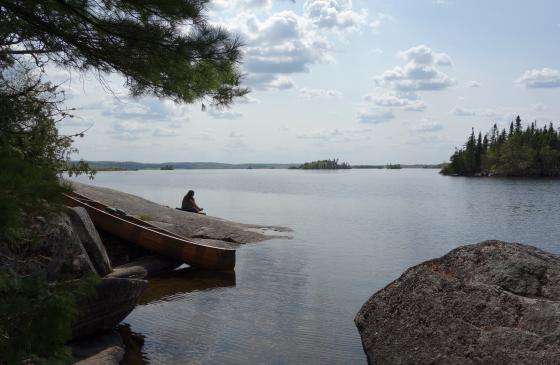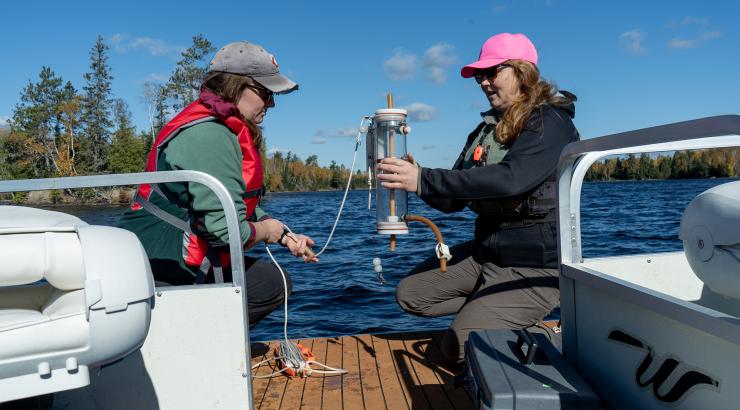HEALTH RISKS NEED TO BE CONSIDERED WHEN DECIDING ABOUT SULFIDE-ORE COPPER MINING
Over the past few years, the medical community in Minnesota has raised an unprecedented voice of concern in response to sulfide-ore copper mining, such as that proposed by PolyMet and Twin Metals. The Minnesota Medical Association, Minnesota Academy of Family Physicians, Minnesota Nurses Association, Minnesota Public Health Organization along with dozens of individual providers, and non-profit groups with ties to human health all submitted letters in response to the one Environmental Impact Statement (EIS) done for sulfide-ore copper mining in Minnesota. The consensus by all of these groups representing over 30,000 healthcare professionals in our state is that an independent Health Impact Assessment (HIA) be mandated as part of an EIS necessary for decisions regarding sulfide-ore copper mining.
Let us state here that we are not writing about the taconite mining industry, which has played and continues to play an important part in Minnesota’s history, economy, and culture. Sulfide-ore copper mining is a toxic industry with a very poor track record of success. A peer-reviewed Earthworks study in 2012 showed that 100% of modern US copper mines that had operated for 5 years or more had already polluted water. Several years can pass before leaks are detected. “Modern mining technology” that has been promised to be “safe” has not proven itself successful.
The World Health Organization lists the ten environmental toxins with greatest concern to human health, and sulfide-ore copper mining releases at least six of these - mercury, lead, arsenic, particulate air pollution, asbestos, and cadmium. Sulfide-ore copper mining also releases sulfates, which fuel the chemical reactions that transform mercury to its toxic form methylmercury.
These toxins have known harmful effects to human health including cancer, lung disease, heart disease, and neurodevelopmental diseases (dyslexia and other learning disorders, intellectual disabilities, autism, and ADHD among them). Babies from gestation through age three are especially vulnerable due to their rapidly growing brains, which have a high affinity for these heavy metals.
Not only will the water quality suffer, but so too the air. Due to releases of fine particulates, asbestos, and asbestos-like particles, sulfide-ore copper mining in the Superior National Forest (SNF) on the doorstep to the BWCA would be expected to cause degradation of the air quality in a significant portion of the Boundary Waters, potentially endangering miners, members of the community, and visitors to the area.
Given these still-present concerns, it is time again to raise our voices regarding the current decisions being made in Washington DC regarding the SNF “mineral withdrawal” (note that the terminology in the current federal process is confusing – withdrawal does not refer to mineral extraction, but rather to withdrawal of parcels of federal land from mining eligibility) in the Rainy River watershed. The outcome of the current process will directly affect our state’s crown jewel, the Boundary Waters Wilderness.
In short, unless protections are given to the sensitive area under study, there remains potential for a large, industrial sulfide-ore copper mining site on the banks of the Kawishiwi River at the headwaters of the BWCA. Any toxic leachate would enter the Kawishiwi River and then flow north into the heart of the BWCA and ultimately into the Rainy River and Canada.
To guard against these insidious health effects, we are urging the US Forest Service to do a comprehensive and robust Environmental Assessment regarding mineral lease withdrawal in the Rainy River watershed, specifically in regard to the risks to human health. This must include modeling for “less than ideal” releases similar to that seen in other sulfide-ore copper mines rather than limiting the modeling to the “best case scenario” often promised but never accomplished.
It is also imperative that this assessment include not only the potential negative effects of a sulfide-ore copper mine in this water-rich area, but also include an assessment of the economic and cultural benefits of the current region as it stands and the risks/costs of what will be lost with the development of such mining at the headwaters of the BWCA. It is our opinion that a robust EA including these components will clearly demonstrate that mineral withdrawal in the Rainy River watershed is necessary to protect the health and wellness of this sensitive and special region of our state.
We travelled to Washington, DC recently and voiced our concerns about these health impacts. Now more than ever, we need concerned Minnesotans to raise their voices, and we ask you to join us. Please go to the following website https://www.fs.usda.gov/project/?project=50938 and submit a comment under “Comment/Object on Project”.
John Ipsen, MD PhD
Jennifer Pearson, MD
Steven Sutherland, MD
Kris Wegerson, MD



